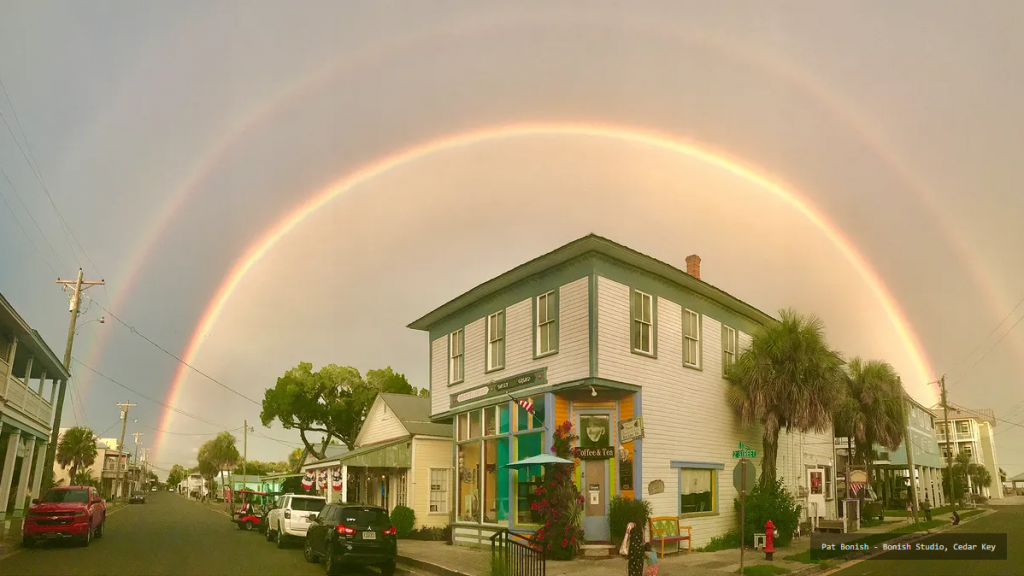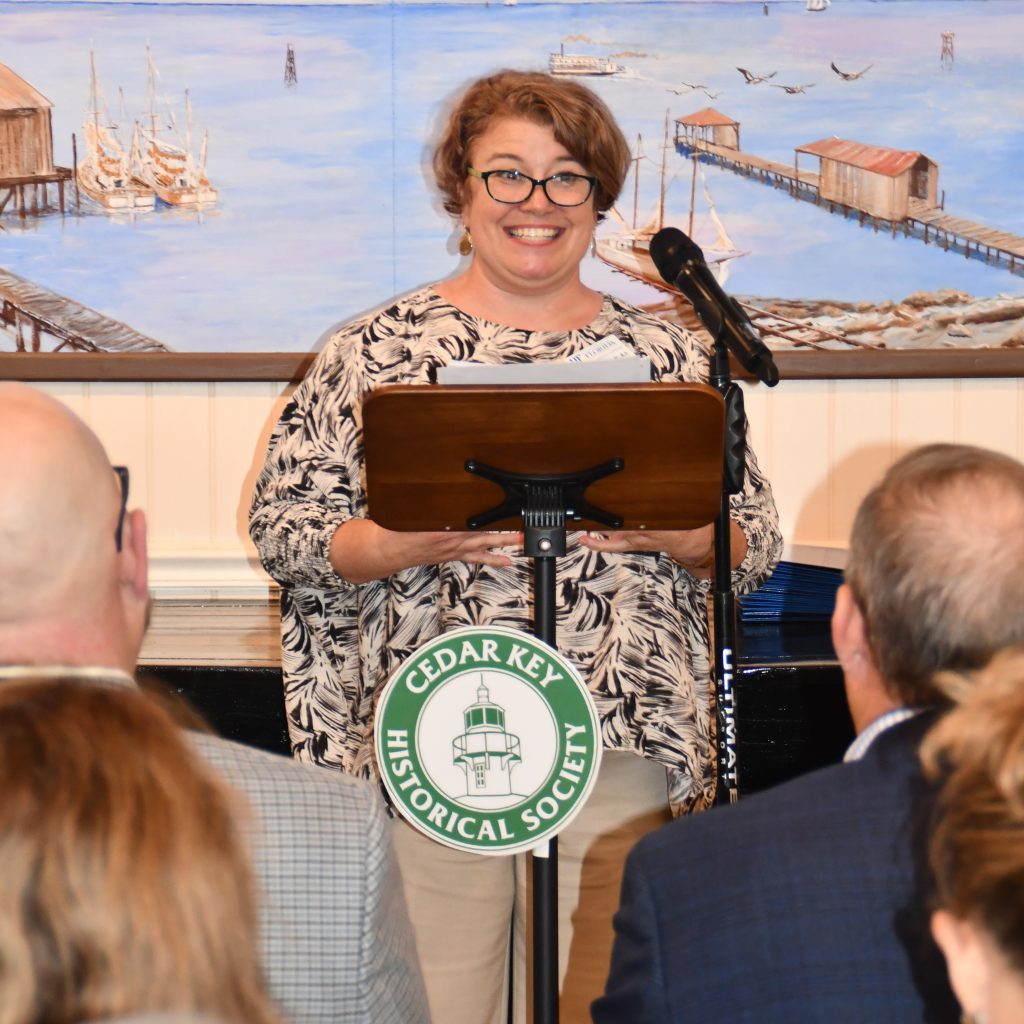The National Trust for Historic Preservation named Cedar Key to the 2025 list of America’s 11 Most Endangered Historic Places, its annual spotlight on some of America’s greatest treasures under threat, at a public event held at the Cedar Key Historical Society & Museum. The University of Florida Historic Preservation Program partnered with the Florida Trust for Historic Preservation, the Historical Society & Museum, and the City of Cedar Key to help land this critical designation.
Cedar Key represents an increasingly rare example of Old Florida, small coastal communities based on a mix of working waterfront, local business, and small-scale, affordable tourist accommodations. This uniquely Florida historic place has been hit hard by hurricanes in the last three years, especially Helene in 2024. Inclusion on this year’s 11 Most Endangered list will help focus attention on the risks faced by historic coastal communities – and the small businesses that are essential to their survival – due to stronger, more frequent storms.

“We hope for Cedar Key to be a story of community resilience instead of endangerment,” said National Trust President Carol Quillen. “With the increasing threats of severe weather events and rising sea levels, we must turn our attention to the small, historic, often isolated coastal communities that need our support.”
Recovery from Hurricane Helene is currently underway but is likely to take years. In the meantime, adaptation is necessary to prepare for the future. The University of Florida was already working with the City of Cedar Key to provide planning, research, and technical assistance, including a Resilient Cedar Key Adaptation Plan completed just before Hurricane Helene hit, recommending solutions like elevating and wet-proofing historic buildings, improving drainage to protect a historic cemetery, and using nature-based “living shoreline” approaches to reduce the impacts of storm surges. As recovery continues, Cedar Key will require consistent support and resources to ensure the future of this historic community.
“Cedar Key embodies thousands of years of Florida history and is one of our state’s historic treasures,” said Florida Trust Board President Mike Cosden. “The Florida Trust is thrilled to have been a part of its inclusion on this year’s list and committed to partnering to help historic preservation be a part of driving its future.”
UF Historic Preservation Director Cleary Larkin is a member of the Florida Trust and had been brainstorming with Melissa Wylie, Florida Trust CEO and President, on a Florida place for nomination. While Cleary was working on hurricane cleanup efforts in Cedar Key, she came up with an idea to nominate the entire city for this designation.

“I knew that Cedar Key was special, but it wasn’t until I started getting to know its residents that I realized that this place truly is Old Florida,” Larkin said. “It isn’t just the architecture or the archaeology, it is a way of life; I think it is a connection to the land you live on and the environment you live in.”
Preservation in Cedar Key looks like a small working waterfront community being rebuilt in the wake of multiple hurricanes with resilience measures adopted. Economic revitalization will be supported through renewed heritage tourism and support of the historic working waterfront industry in the area. This designation will help to expand awareness and public discourse about the challenges and preservation-based solutions to rising sea levels and more frequent and severe weather events across the state of Florida.
Cedar Key Mayor Jeff Webb spoke during the event and shared his vision for Cedar Key’s recovery.
“The people of Cedar Key are working hard to keep heritage going into the future,” Webb said. “We remember the past but are not staying in it. We want to move forward not by losing the heritage and charm but finding a new evolution for Old Florida. Finding how we keep Old Florida but not stay still.”